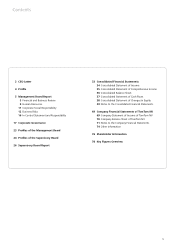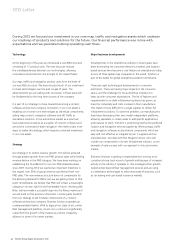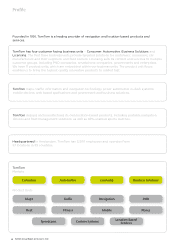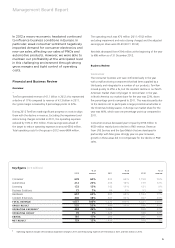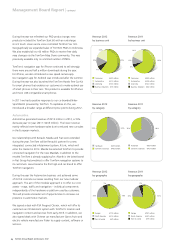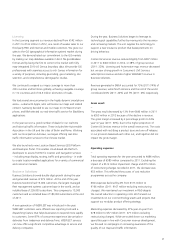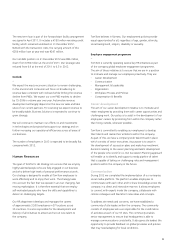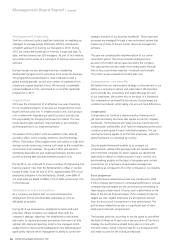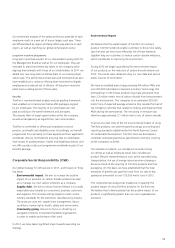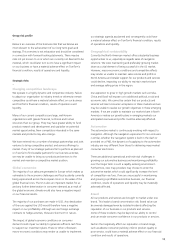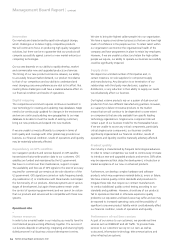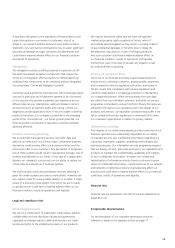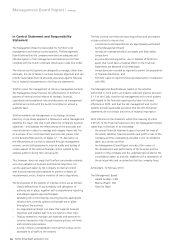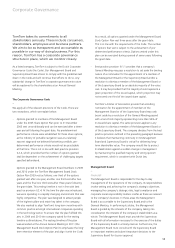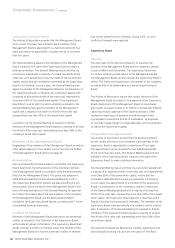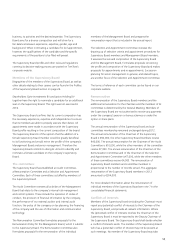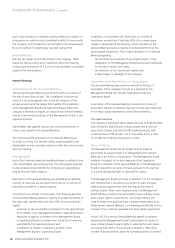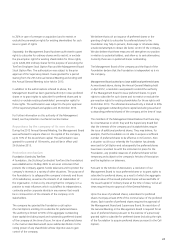TomTom 2012 Annual Report Download - page 13
Download and view the complete annual report
Please find page 13 of the 2012 TomTom annual report below. You can navigate through the pages in the report by either clicking on the pages listed below, or by using the keyword search tool below to find specific information within the annual report.11
Our benchmark analysis of the salary and bonus potential of each
employee results in a new set of bonus targets each year. These
are differentiated by region and fairly refl ect pay practice in each
region, as well as matching our global remuneration policy.
Long-term incentive programme
Long-term incentives are part of our remuneration policy, both for
the Management Board as well as for our employees. They are
intended to attract and retain key talent to the company while
aligning their interests with those of our shareholders. In 2011 we
added two new long-term incentives plans to our existing share
option plan. The performance share plan and restricted stock plan
have enabled us to continue offering share incentives to eligible
employees at a reduced risk of dilution. All long-term incentive
plans have a vesting period of three years.
Benefi ts
TomTom’s new benchmark analysis and job-grading framework
have enabled us to harmonise the benefi ts packages enjoyed
by our employees. The majority of our employees are now
paid according to the same framework and principles.
This assures them of equal opportunities within the company,
as well as transparency as regards their own remuneration.
TomTom is committed to offering all employees a secure
pension, and health and disability cover. Accordingly, our benefi t
programmes focus primarily on these aspects and their application
worldwide. We are committed to ensuring that our employees
have access to quality pension, health and disability products, and
we offer a product discount programme worldwide as part of our
benefi ts package.
Corporate Social Responsibility (CSR)
Our global strategy for CSR was set in 2011, and focuses on three
key areas:
– Environmental impact. We aim to increase the positive
impact of our products on carbon dioxide emissions as well
as to manage our own carbon emissions as a company.
– Supply chain. We aim to ensure that we behave in a socially
responsible way towards our consumers, business customers
and suppliers. This includes setting targets to meet current
industry standards for the electronics manufacturing industry.
The areas we cover are: supply chain management, labour
conditions, human rights, health, safety and environment.
– Community giving. We aim to focus on donating our
navigation products to selected charitable organisations
in order to enable and enhance their work.
In 2012, we have taken signifi cant steps towards executing our
strategy.
Environmental impact
—
We believe that the overall impact of TomTom on society is
positive. TomTom products enable customers to drive more safely,
save fuel and use time more effi ciently. All of these elements
together help our customers to reduce carbon dioxide emissions,
which contributes to improving the environment.
During 2012 we began quantifying the environmental impact
of our products on the reduction of carbon dioxide emissions in
2012. The results were obtained using our own data and various
public sources of information.
We have an installed base of approximately 44 million PNDs and
over 200,000 subscribers to Business Solutions’ technology. We
estimate that in 2012 these products may have prevented more
than 2.3 million metric tons of carbon dioxide from being emitted
into the environment. This compares to an estimated 200,000
metric tons of expected average emissions that resulted from all of
the company’s activities that related to making and shipping these
PNDs during the same period. The net saving in emission was
therefore approximately 2.1 million metric tons of carbon dioxide.
To arrive at a clear view of the net environmental impact of using
TomTom products, we used the greenhouse gas accounting and
reporting standards established by the World Business Council
for Sustainable Development. TomTom has now developed a
complete corporate greenhouse gas emission inventory covering
all the company’s activities.
The activities included in our calculations include running
our offi ces as well as employee travel. Also included are
product lifecycle related emissions such as the manufacturing,
transportation, the use of energy resources when charging a
device and end-of-life recycling of TomTom products and their
packaging. On this basis, we have established that the total
emissions of greenhouse gas that result from our day-to-day
operations amounted to over 120,000 metric tons in 2012.
This comprehensive analysis has enabled us to quantify the
positive impact of using TomTom products for the fi rst time.
We believe that it demonstrates that the positive impact of our
products is signifi cantly greater than our own organisational
emissions.


